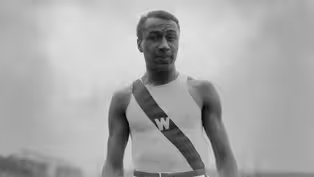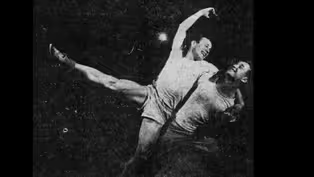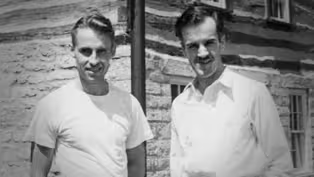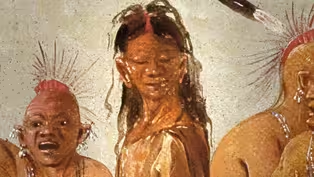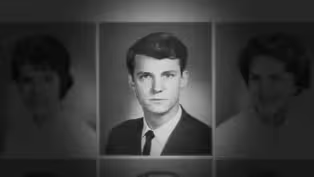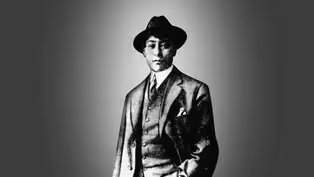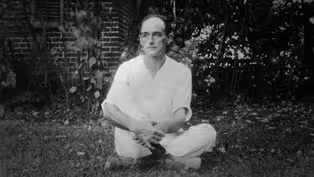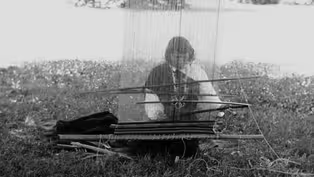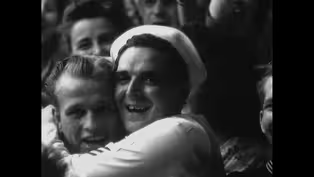Wisconsin Pride
Layton School of Art
Clip: Special | 6m 13sVideo has Closed Captions
The progressive, visionary lesbian couple behind Milwaukee's Institute of Art and Design.
Charlotte Partridge and Miriam Frink met at Downer College for Women in 1915. Historically, women’s colleges were safe spaces for female relationships to thrive. Partridge and Frink’s would thrive for more than fifty years. In that time, they had an immeasurable impact on arts and culture through their direction of the Layton School of Art, Milwaukee Institute of Art and Design’s predecessor.
Problems playing video? | Closed Captioning Feedback
Problems playing video? | Closed Captioning Feedback
Wisconsin Pride is a local public television program presented by PBS Wisconsin
Funding for Wisconsin Pride is provided by Park Bank, SC Johnson, the Greater Milwaukee Foundation, the Evjue Foundation, the charitable arm of the Capital Times, TruStage, the New Harvest Foundation,...
Wisconsin Pride
Layton School of Art
Clip: Special | 6m 13sVideo has Closed Captions
Charlotte Partridge and Miriam Frink met at Downer College for Women in 1915. Historically, women’s colleges were safe spaces for female relationships to thrive. Partridge and Frink’s would thrive for more than fifty years. In that time, they had an immeasurable impact on arts and culture through their direction of the Layton School of Art, Milwaukee Institute of Art and Design’s predecessor.
Problems playing video? | Closed Captioning Feedback
How to Watch Wisconsin Pride
Wisconsin Pride is available to stream on pbs.org and the free PBS App, available on iPhone, Apple TV, Android TV, Android smartphones, Amazon Fire TV, Amazon Fire Tablet, Roku, Samsung Smart TV, and Vizio.
- Josie Osborne: The Layton School of Art was started by two women in 1920, Miss Partridge and Miss Frink.
- Charlotte Partridge and Miriam Frink met at Downer College for Women in Milwaukee in 1915.
Historically, women's colleges were a place where romantic female relationships could safely thrive.
For Partridge and Frink, their love and commitment for each other thrived for more than 50 years.
- Josie Osborne: Charlotte Partridge was charismatic.
She was just sort of lovable, right?
She smiled a lot.
She was the gregarious one.
Miriam Frink, she was much more serious and let Charlotte be the front person.
- The two made friends with Milwaukee businessman Frederick Layton, the meatpacking millionaire who had opened the Layton Gallery in 1888, and filled it with grand works purchased on his travels.
In 1920, Layton offered the gallery basement to Partridge and Frink to hold classes.
But the art they would inspire would be radically different from the old works that filled the gallery's walls.
- Josie Osborne: Charlotte Partridge and Miriam Frink were more aligned with what was happening in terms of the European avant-garde.
- European avant-garde movements like Cubism and Dadaism challenged artistic conventions, shocked some, and spoke deeply to others.
- Josie Osborne: For Charlotte Partridge and Miriam Frink, they brought these avant-garde ideas into their teaching, into their own art collection in their home, and embraced it.
[piano] - In the house the couple ha d designed and built together, they hung modern works of art at home among bold creative expressions.
- Josie Osborne: There's a pretty strong connection between queer identity and avant-garde movements.
There's something about growing up knowing you're different from what the rest of society says people should be, just makes you more open to new ideas.
- New ideas fueled Partridge and Frink's avant-garde art school.
- Josie Osborne: The Layton School of Art was basically an incubator for creative expression.
- Like Europe's Bauhaus, the Layton School put art and design on equal footing.
Nude drawing classes were attended by students of both sexes, something previously unheard of in Milwaukee.
Generations of graduates would contribute to the city's art scene and design of its products.
- Josie Osborne: They're developing these creative minds, really sent a lot of people out into the community with this training and this understanding of what was possible.
- All things seemed possible for the Layton School.
Through the Great Depression, the two leaders took no salary to stay open.
During World War II, they held free art shows intended to build public support for the war effort.
After the war, enrollment boomed.
Partridge and Frink would greet the 1950s with a bold plan for a new modern home for the school.
But times were changing.
- Josie Osborne: The 1950s were not, not a good time to be a woman.
Definitely not a good time to be a queer woman.
They had just raised all the money to build this amazing building.
Then it was determined that it wasn't appropriate for two women to be leading a school of national reputation.
- The Layton School's male-dominated board forced Charlotte Partridge and Mi riam Frink to leave the school they founded and nurtured for decades.
Their last work was scratching a pencil edit to the board's resolution, making it crystal clear that their retirement was not voluntary.
Without their leadership, the Layton School ultimately struggled.
Its sleek headquarters were co ndemned for a highway project in the late '60s.
A few short years later, the Layton School closed.
The doors shut on a life's endeavor.
The couple remained involved in Milwaukee's community, with Partridge leading efforts in building senior housing.
Their impact on the city's art scene would live on.
In 1974, a group of former Layton School instructors started the Milwaukee Institute of Art and Design (MIAD).
MIAD continues today as a world-class art and design school, training students in understanding what's possible.
A legacy sparked by Charlotte Partridge and Miriam Frink.
- Josie: I discovered what bad-- [whispers] Can I say 'badass?'
[laughs] I discovered what total badasses they were!
These stories are beginning to emerge that gay and lesbian people are making a huge difference in our culture.
They're people who blazed a trail for me to be able to be who I am.
But they're also people who did great things.
Video has Closed Captions
Clip: Special | 7m 25s | La Crosse’s George Poage, the first Black Olympic medalist, lived a hidden life. (7m 25s)
Video has Closed Captions
Clip: Special | 6m 35s | In UW’s Haresfoot club, men performed in drag, but members ran afoul of the University. (6m 35s)
Video has Closed Captions
Clip: Special | 6m 56s | Influenced by Warner’s example, two gay men created the influential historic site. (6m 56s)
Preview: Special | 3m | George Poage, forced to hide his LGBTQ+ identity, became the first Black Olympic medalist. (3m)
Preview: Indigenous Two-Spirit
Preview: Special | 3m 35s | Wisconsin's LGBTQ+ history and present includes Indigenous two-spirit people. (3m 35s)
Video has Closed Captions
Clip: Special | 6m 11s | A secret policy of removing gay students and staff from UW-Madison took an enormous toll. (6m 11s)
Video has Closed Captions
Clip: Special | 5m 44s | Put on trial for gender expression, Ralph Kerwineo became the “Girl-Man” of Milwaukee. (5m 44s)
Video has Closed Captions
Clip: Special | 4m 17s | Called Wisconsin’s first out gay man, Warner defied the gender expectations of his time. (4m 17s)
Video has Closed Captions
Clip: Special | 3m 42s | Two-Spirit is a term today encompassing many Indigenous beliefs about gender identity. (3m 42s)
Video has Closed Captions
Clip: Special | 2m 6s | World War Two fight held unfulfilled promises for a better life for LGBTQ+ Americans. (2m 6s)
Providing Support for PBS.org
Learn Moreabout PBS online sponsorshipSupport for PBS provided by:
Wisconsin Pride is a local public television program presented by PBS Wisconsin
Funding for Wisconsin Pride is provided by Park Bank, SC Johnson, the Greater Milwaukee Foundation, the Evjue Foundation, the charitable arm of the Capital Times, TruStage, the New Harvest Foundation,...
